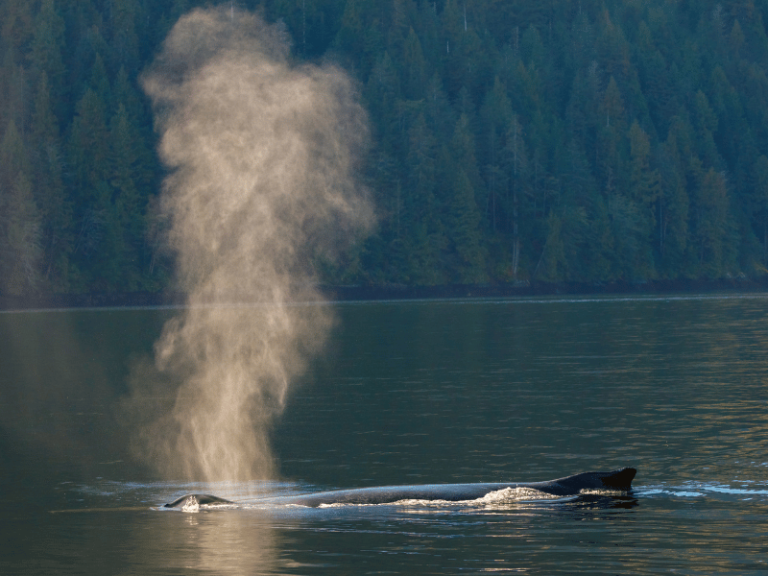Whale hunters in the ocean can detect whales within a range of several kilometers. How do they know whether there are whales in the turbulent seas? It turns out whales have a “flaw” that makes them easily detectable. Although whales live in water, they still need to breathe air into their lungs.
The blowholes of whales are different from other mammals; they lack a nose covering and are positioned on the top of the head between the eyes. In some species, the two blowholes are close together, while in others, they are fused into one.
Whales have large lungs; for example, a fin whale’s lungs can weigh about 1500 kilograms and hold up to 15,000 liters of air. This large lung capacity allows whales to stay submerged for extended periods without needing to surface frequently to breathe. However, they cannot dive for too long; typically, after about fifteen minutes, they need to come to the surface to breathe. When they exhale, they first expel a large amount of air from their lungs. Due to the strong pressure, this exhalation produces a loud sound, sometimes resembling the whistle of a small locomotive. The powerful blast of air from the blowholes brings seawater into the air, creating a fountain-like spray (blow) on the blue ocean’s surface. In colder seas, the warm, moist air from the lungs condenses into small water droplets, adding to the spectacle.
Different whale species produce water spouts of varying heights, shapes, and sizes. For instance, the spray from a fin whale can reach heights of 9-12 meters. Whale hunters can not only spot whales from a distance based on these sprays but also identify the species and estimate their size.

